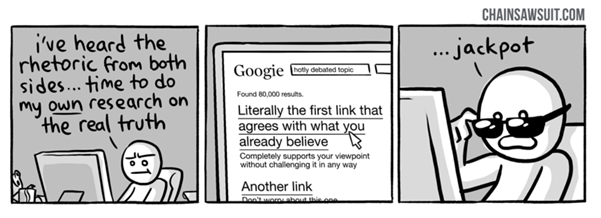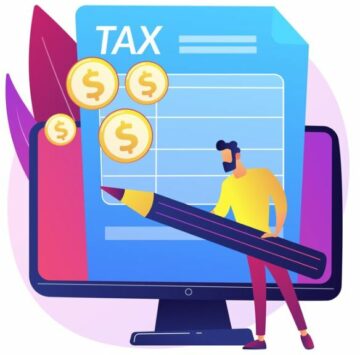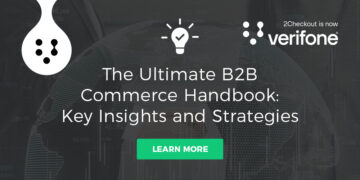Picture this: You’re on a quest to understand the minds of your website’s visitors, to unravel the secrets of their decision-making processes, and to turn their fleeting interest into unwavering commitment. As Conversion Rate Optimization (CRO) professionals, this journey is second nature.
But what if I told you that beneath the surface of every click and conversion lies a fascinating, yet often overlooked, realm of behavioral biases?
Welcome to the captivating world of behavioral psychology, where understanding the quirks of human cognition can be the key to unlocking unprecedented success in CRO. In this article, we embark on a journey to explore the profound impact of behavioral biases on our everyday lives.
Our goal is twofold: to shed light on the common biases that shape our choices, and to equip you with the tools to navigate these biases in daily life while harnessing their power for conversion optimization. Fasten your seatbelts, because we’re about to delve into the captivating universe of behavioral biases and their significance in the CRO world.
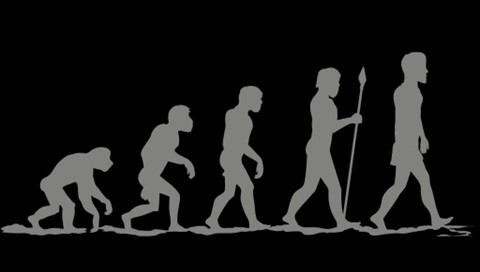
Behavioral Biases: The Human Decision-Making Matrix
What are Behavioral Biases?
At the heart of understanding human behavior lies the concept of behavioral biases. These are the subtle (often imperceptible) influences that shape our choices, perceptions, and judgments.
Behavioral biases are the result of our brains’ remarkable ability to process vast amounts of information and make quick decisions. They serve as mental shortcuts, helping us navigate a complex world with limited cognitive resources.
The Evolutionary Aspect: How Biases Came to Exist
To appreciate behavioral biases, we must rewind the tape of human evolution. These biases emerged as survival mechanisms in our distant ancestors. Take, for instance, the confirmation bias—a tendency to seek information that confirms our existing beliefs. In the context of early humans, this bias helped them cling to knowledge vital for survival. However, in our modern world, it can lead to echo chambers and reinforce misguided convictions.
Two Types of Biases: Explicit and Implicit
Behavioral biases come in two flavors: explicit and implicit.
Explicit biases are conscious and deliberate, stemming from our awareness and intention. Implicit biases, on the other hand, are automatic and subconscious, often lurking beneath the surface.
Implicit biases can be tricky to recognize, as they may run counter to our explicit beliefs.
Understanding and addressing both types is crucial in our journey to manage biases effectively.
Not All Biases Are Bad: The Yin and Yang of Cognitive Biases
While many biases have earned a bad reputation for leading us astray, not all are detrimental.
Consider the availability bias. This bias causes us to rely on readily available information, which can be beneficial when making quick decisions based on past experiences.
For example, it aids firefighters in assessing risks in an emergency. However, it can be detrimental when it leads investors to make decisions based on recent market trends without considering long-term data, resulting in financial losses.
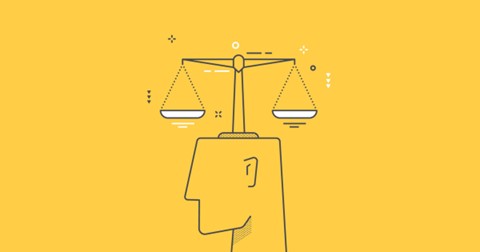
Ethical Dilemma: Using Biases in CRO
In the world of marketing and Conversion Rate Optimization (CRO), the use of behavioral biases raises important ethical considerations. It’s a double-edged sword, as these biases can be harnessed for positive outcomes, such as improving user experience and helping customers make informed decisions. However, a fine line separates ethical use from manipulation.
Ethical marketers and CRO professionals prioritize transparency and consent. They recognize that while biases can be powerful tools, using them unethically erodes trust and damages brand reputation. For instance, employing the scarcity effect to create a sense of urgency can be a valuable tactic when promoting limited-time offers, but it should not involve misleading customers about product availability.
Ultimately, the ethical use of behavioral biases involves a commitment to empowering customers rather than exploiting their vulnerabilities. It means providing accurate information, allowing users to make choices freely, and ensuring that any influence exerted aligns with the best interests of the audience. Striking this balance is not only ethically sound but also contributes to the long-term success and sustainability of businesses in today’s discerning consumer landscape.
Common Behavioral Biases
Let’s dive into the most common behavioral biases and explore how you can minimize their impact in your life, and how to wisely use them in CRO.
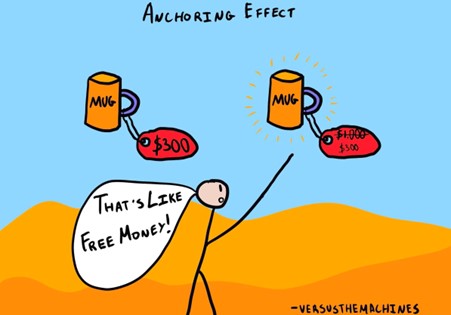
Anchoring Bias: The Influence of Initial Impressions
Anchoring bias is a cognitive bias where individuals rely heavily on the first piece of information they encounter when making decisions. This initial “anchor” significantly influences subsequent judgments, even if the anchor is arbitrary or irrelevant to the decision at hand.
It’s akin to being tethered to a fixed point that shapes your perception of the world around you.
Real-Life Examples of The Anchoring Bias
Imagine you’re house-hunting, and you visit two houses. The first house you see is significantly overpriced, setting a high anchor. Subsequently, the second house, though still expensive, seems like a better deal in comparison.
In a negotiation, the initial offer often acts as an anchor. If you’re selling a used car and start with a high asking price, the buyer’s counteroffer is likely to be lower, even if it’s still a good deal for both parties.
When shopping, encountering a “regular” price before seeing a discounted price can anchor your perception of the discount’s value. For instance, a $100 item on sale for $50 seems like a great deal after seeing an initial price of $200.
The De Beers Diamond Corporation Ad Example
One of the most iconic instances of anchoring bias in marketing history comes from the De Beers Diamond Corporation. In the mid-20th century, they introduced the concept that an engagement ring should cost at least two months’ salary.
This marketing campaign served as a powerful anchor, influencing how people perceived the appropriate expenditure for an engagement ring. Even today, many individuals consider this anchor when shopping for such rings despite its arbitrary nature.
We highly recommend you watch this video for more context:
[embedded content]
Influence on Perceptions and Choices
The Anchoring bias has a profound impact on how we perceive value and make choices. It can lead us to overvalue or undervalue options based on the initial reference point.
To minimize its impact on our daily life:
- Be aware of the anchor’s presence in your decision-making process.
- Seek multiple sources of information before settling on a judgment.
- Pause and reconsider your initial response when making significant decisions.
Anchoring in CRO
In Conversion Rate Optimization (CRO), anchoring can be a potent tool when used ethically. Here’s how it can be employed:
- Setting a higher anchor price for a product before revealing a discounted price can make the discount appear more appealing.
- Presenting a premium bundle as the initial anchor can make standard bundles seem like a cost-effective choice.
- Anchoring a subscription tier with premium features can encourage users to choose higher-priced plans, perceiving greater value.
Confirmation Bias: Reinforcing our Beliefs
The Confirmation bias is the human tendency to seek, interpret, and remember information in a way that confirms our preexisting beliefs, ideas, or hypotheses.
Essentially, we filter out contradictory evidence and eagerly embrace information that aligns with what we already think or believe.
Manifestations in Everyday Life
- When people selectively follow news sources or social media accounts that echo their own views, their existing beliefs are reinforced, and they often miss out on diverse perspectives.
- During debates or discussions, individuals tend to notice and remember points that support their political stance while dismissing or forgetting opposing arguments.
- When researching a product online, confirmation bias can lead us to focus on reviews that confirm our initial inclinations, ignoring negative reviews that challenge our preferences.
Impact on Decision-Making and Minimizing Its Negative Effects
The Confirmation bias can severely impair decision-making by preventing us from considering alternative viewpoints and evidence.
To reduce its negative impact:
- Actively seek out information that contradicts your beliefs or initial assumptions.
- Encourage open dialogue and engage with people who hold differing perspectives.
- Approach decision-making with a critical mindset, questioning your own biases and assumptions.
The Confirmation Bias in CRO
In Conversion Rate Optimization (CRO), understanding the confirmation bias can be a valuable tool to enhance user experience and decision-making:
- Tailoring product recommendations based on a user’s previous purchases aligns with their confirmed preferences, increasing the likelihood of a conversion.
- Analyzing user behavior in A/B tests can help confirm or disprove hypotheses about what design or content resonates best with your audience.
- The Confirmation bias can influence the type of feedback customers provide. Acknowledging this bias helps in interpreting feedback more accurately and making data-driven improvements.
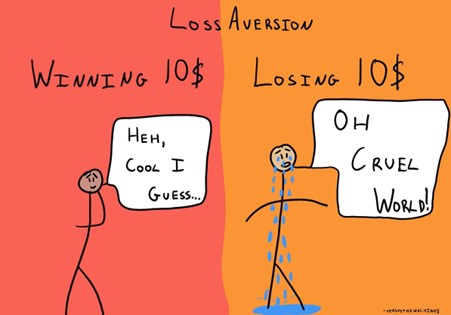
Loss Aversion: the Emotional Weight of Avoiding Losses
Loss aversion is a cognitive bias that reflects the human tendency to prefer avoiding losses over acquiring equivalent gains.
In essence, the fear of losing something we already possess is often more powerful than the prospect of gaining something new. It’s an inherent part of our decision-making psychology.
Real-Life Examples of Loss Aversion
- Investors often hold on to poorly performing stocks because they fear the loss associated with selling them, even if it means missing out on better opportunities.
- In casinos, players who have lost money might continue to gamble in hope of recouping their losses, even when the odds are stacked against them.
- Consumers may avoid returning items they’ve purchased even if they are dissatisfied with the product, simply because they don’t want to experience the “loss” of their spent money.
The Emotional Aspect of Loss Aversion
Loss aversion is rooted in deep emotional responses. The fear of loss triggers feelings of anxiety, regret, and discomfort. These emotional reactions often drive our decision-making process, leading us to make choices that protect what we have even if it may not be the most rational or beneficial option.
To mitigate the effect of loss aversion in your everyday decisions:
- Shift your perspective by focusing on potential gains, opportunities or lessons that can come from accepting minor losses or change.
- Develop the habit of recognizing when loss aversion is influencing your decisions: self-awareness is the first step to countering this bias effectively.
- Actively acknowledge loss aversion and challenge it with a more balanced perspective. Encourage rational decision-making by consciously considering both potential losses and gains.
Loss Aversion in CRO
In Conversion Rate Optimization (CRO), understanding loss aversion can be leveraged to enhance user experience and drive conversions:
- Presenting limited-time deals and emphasizing potential loss if users don’t act quickly can motivate them to convert.
- Remind users of the items left in their cart, highlighting the potential loss of those items if they don’t complete their purchase.
- Offer exclusive access or benefits to members, creating a sense of loss for non-members who miss out on these privileges.
By tapping into the emotional aspect of loss aversion, CRO professionals can guide users toward conversion actions that align with their instinctual desire to avoid losses, creating a win-win scenario for both shoppers and businesses.
Authority Bias: The Persuasive Power of Trust in Experts
The authority bias is a cognitive bias where individuals tend to give undue weight or trust to the opinions, advice, or actions of authority figures or experts.
We often defer to those whom we perceive as knowledgeable or in positions of authority even if their expertise might not be directly related to the matter at hand.
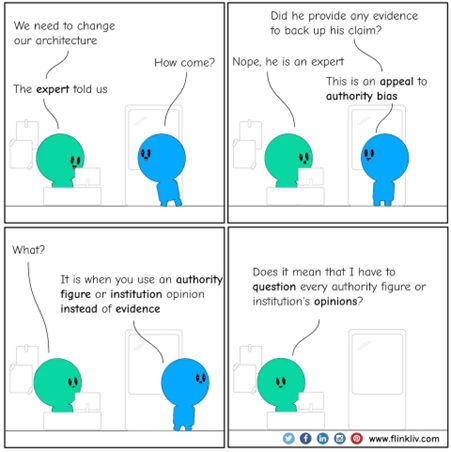
How Authority Biases Affect Daily Decision-Making
The Authority bias plays a substantial role in our daily decisions, often leading us to follow the lead of perceived experts:
- Patients might unquestioningly follow a doctor’s treatment plan even if they have concerns due to the perceived authority of the healthcare professional.
- Products endorsed by celebrities or industry experts may sway consumer purchasing decisions based on the authority bias.
- Students may choose courses or institutions based on recommendations from authoritative figures – like parents or teachers – without exploring alternative options.
Toothpaste Companies and Fake Doctors
Toothpaste companies have capitalized on the authority bias by featuring actors portraying fake doctors or dentists in their ads. These “doctors” lend an aura of expertise and authority to the product, influencing consumers to trust the toothpaste’s efficacy based on the perceived endorsement of a medical professional.
Counteracting the Influence of the Authority Bias: Strategies for Informed Decision-Making
While the authority bias can be a natural part of our decision-making process, it’s essential to take proactive steps to minimize its negative effects.
To foster a more balanced and evidence-based approach within organizations, consider these strategies:
- Encourage a culture of diversity and inclusion within your organization. Seek input and feedback from individuals with varied backgrounds, experiences, and expertise, rather than solely relying on authority figures’ opinions.
- Emphasize the importance of evidence-based decision-making. Encourage employees to scrutinize claims, hypotheses, and recommendations, ensuring they are supported by credible data and research rather than simply accepting them based on the authority of the source.
- Promote collaboration and peer review processes. Encourage team members to critically evaluate each other’s ideas and proposals, fostering an environment where decisions are collectively assessed rather than blindly following the opinions of authority figures.
The Authority Bias in CRO
Leveraging the authority bias in Conversion Rate Optimization (CRO) can enhance user trust and encourage conversions:
- Display endorsements or testimonials from authoritative figures in your industry to build trust and credibility.
- Highlight any relevant certifications, awards, or recognition received by your business to establish authority in the field.
- Collaborate with industry influencers whose opinions are respected by your target audience to endorse your products or services.

Navigating Behavioral Biases for Informed Choices
In the journey through the intricate terrain of behavioral biases, we’ve explored the profound impact they wield on our everyday lives. From anchoring and confirmation biases to the loss aversion and the authority bias, these cognitive quirks shape our perceptions and influence our decisions more than we might realize.
However, the first step to conquering these biases lies in awareness and mindfulness, the tools that empower us to recognize and challenge our innate tendencies. By fostering critical thinking and, when necessary, seeking the guidance of Cognitive Behavioral Therapy (CBT), we can transcend the constraints of biases and make better-informed choices.
Understanding and mitigating behavioral biases isn’t just a personal quest for clarity; it’s a professional imperative, especially in the realm of Conversion Rate Optimization (CRO). The ethical utilization of biases can enhance user experience and drive conversions. By leveraging anchoring, authority, and other biases responsibly, CRO professionals can guide user behavior in ways that benefit both customers and businesses.
As we conclude our exploration, let us remember that biases are not inherent obstacles but tools of cognition.
When wielded consciously and judiciously, they can be instruments for creating better user experiences, forging deeper connections, and achieving our goals. By navigating the intricate interplay of biases, we pave the way for better-informed choices in both our personal lives and the ever-evolving landscape of Conversion Rate Optimization.
- SEO Powered Content & PR Distribution. Get Amplified Today.
- PlatoData.Network Vertical Generative Ai. Empower Yourself. Access Here.
- PlatoAiStream. Web3 Intelligence. Knowledge Amplified. Access Here.
- PlatoESG. Carbon, CleanTech, Energy, Environment, Solar, Waste Management. Access Here.
- PlatoHealth. Biotech and Clinical Trials Intelligence. Access Here.
- Source: https://blog.2checkout.com/exploring-behavioral-biases-in-cro-and-decision-making/
- :has
- :is
- :not
- :where
- 32
- a
- About
- accepting
- access
- Accounts
- accurately
- achieving
- acquiring
- Act
- actions
- actors
- acts
- Ad
- addressing
- advice
- affect
- After
- against
- aids
- align
- Aligns
- All
- already
- also
- alternative
- amounts
- an
- Anchor
- and
- Anxiety
- any
- appealing
- appear
- appreciate
- approach
- appropriate
- ARE
- arguments
- around
- article
- AS
- asking
- aspect
- assessed
- Assessing
- associated
- assumptions
- At
- audience
- Aura
- authority
- Automatic
- availability
- available
- aversion
- AVG
- avoid
- avoiding
- aware
- awareness
- backgrounds
- Bad
- Balance
- balanced
- based
- BE
- because
- before
- behavior
- behavioral
- being
- beliefs
- believe
- beneficial
- benefit
- BEST
- Better
- Beyond
- bias
- biases
- blindly
- both
- both parties
- brand
- bundles
- business
- businesses
- but
- by
- came
- Campaign
- CAN
- capitalized
- captivating
- car
- Casinos
- causes
- celebrities
- Century
- challenge
- change
- choice
- choices
- Choose
- claims
- click
- cognition
- cognitive
- collaboration
- collectively
- come
- comes
- commitment
- Common
- Companies
- comparison
- complete
- complex
- concept
- conclude
- Confirm
- confirmation
- CONFIRMED
- Connections
- conscious
- Consider
- considerations
- considering
- constraints
- consumer
- Consumers
- content
- context
- continue
- contributes
- Conversion
- conversions
- convert
- CORPORATION
- Cost
- cost-effective
- Counter
- countering
- courses
- create
- Creating
- credible
- critical
- CRO
- crucial
- Customers
- daily
- data
- data-driven
- de
- deal
- Deals
- debates
- decision
- Decision Making
- decisions
- deep
- deeper
- delve
- Design
- desire
- Despite
- detrimental
- Diamond
- differing
- directly
- Discount
- discussions
- Distant
- dive
- diverse
- Diversity
- Doctors
- Dont
- drive
- due
- each
- Early
- earned
- echo
- effect
- effectively
- effects
- efficacy
- embark
- embedded
- embrace
- emerged
- emergency
- emotional
- emphasizing
- employed
- employees
- employing
- empower
- empowering
- encounter
- encountering
- encourage
- endorse
- Endorsement..
- Endorsements
- engage
- engagement
- enhance
- ensuring
- Environment
- Equivalent
- especially
- essence
- essential
- establish
- ethical
- evaluate
- Even
- Every
- everyday
- evidence
- evolution
- example
- examples
- Exclusive
- exclusive access
- existing
- expensive
- experience
- Experiences
- expertise
- experts
- exploiting
- exploration
- explore
- Explored
- Exploring
- fake
- fascinating
- fear
- Featuring
- feedback
- feelings
- field
- Figures
- filter
- financial
- fine
- firefighters
- First
- fixed
- Focus
- focusing
- follow
- following
- For
- Forging
- Foster
- fostering
- from
- gaining
- Gains
- Gamble
- Give
- goal
- Goals
- good
- great
- greater
- guidance
- guide
- hand
- Harnessing
- Have
- healthcare
- Heart
- heavily
- help
- helped
- helping
- helps
- High
- higher
- highly
- history
- hold
- House
- houses
- How
- How To
- However
- HTTPS
- human
- Humans
- i
- iconic
- ideas
- if
- Impact
- imperative
- importance
- important
- improvements
- in
- increasing
- individuals
- industry
- influence
- influencing
- information
- informed
- inherent
- initial
- innate
- instance
- instances
- institutions
- instruments
- Intention
- interest
- interests
- into
- intricate
- introduced
- Investopedia
- Investors
- involve
- involves
- IT
- items
- ITS
- journey
- jpg
- judgments
- just
- Key
- knowledge
- landscape
- lead
- leading
- Leads
- least
- left
- LEND
- Lessons
- let
- leveraged
- leveraging
- lies
- Life
- light
- like
- likelihood
- likely
- Limited
- limited-time
- Line
- Lives
- long-term
- losing
- loss
- losses
- lost
- lower
- make
- Making
- manage
- Manipulation
- many
- Market
- marketers
- Marketing
- Matter
- max-width
- May..
- means
- mechanisms
- medical
- Members
- mental
- might
- Mindfulness
- minds
- Mindset
- minimize
- minimizing
- minor
- misleading
- miss
- missing
- MIT
- Mitigate
- mitigating
- Modern
- money
- more
- most
- must
- Natural
- Nature
- Navigate
- navigating
- necessary
- negative
- negotiation
- New
- news
- obstacles
- Odds
- of
- offer
- Offers
- often
- on
- online
- only
- open
- Opinions
- opportunities
- optimization
- Option
- Options
- or
- organization
- organizations
- Other
- our
- out
- over
- own
- parents
- part
- parties
- past
- pave
- peer
- People
- perceived
- perception
- performing
- personal
- perspective
- perspectives
- piece
- plan
- plans
- plato
- Plato Data Intelligence
- PlatoData
- player
- players
- plays
- Point
- points
- political
- positions
- positive
- possess
- potent
- potential
- power
- powerful
- prefer
- preferences
- Premium
- preventing
- previous
- price
- privileges
- Proactive
- process
- processes
- Product
- Products
- professional
- professionals
- profound
- promoting
- Proposals
- prospect
- protect
- provide
- providing
- Psychology
- purchase
- purchased
- purchases
- purchasing
- quest
- Quick
- raises
- Rate
- rather
- rating
- Rational
- reactions
- realize
- realm
- received
- recent
- recognition
- recognize
- recommend
- recommendations
- reduce
- reference
- reflects
- regret
- related
- relevant
- rely
- relying
- remarkable
- remember
- reputation
- research
- resonates
- Resources
- respected
- responses
- responsibly
- result
- resulting
- returning
- revealing
- review
- Reviews
- Rewind
- Ring
- risks
- Role
- rooted
- Run
- sale
- Scarcity
- scenario
- score
- Second
- secrets
- see
- seeing
- Seek
- seeking
- seem
- seems
- Self-Awareness
- Selling
- sense
- Sense of Urgency
- serve
- served
- Services
- setting
- severely
- Shape
- shapes
- Shoppers
- Shopping
- should
- significance
- significant
- significantly
- simply
- solely
- something
- Sound
- Source
- spent
- stacked
- standard
- start
- Step
- Steps
- Still
- strategies
- subscription
- Subsequently
- substantial
- success
- such
- support
- Supported
- Surface
- survival
- Sustainability
- Take
- tape
- tapping
- Target
- teachers
- team
- Team members
- than
- that
- The
- The Source
- the world
- their
- Them
- These
- they
- Think
- this
- those
- though?
- Through
- tier
- to
- today
- today’s
- told
- tool
- tools
- toward
- treatment
- Trust
- TURN
- two
- type
- types
- understand
- understanding
- Universe
- unprecedented
- unravel
- unwavering
- urgency
- us
- use
- used
- User
- User Experience
- users
- using
- Valuable
- value
- Vast
- Video
- viewpoints
- views
- Visit
- visitors
- vital
- votes
- Vulnerabilities
- want
- Way..
- ways
- we
- weight
- What
- when
- which
- while
- WHO
- whom
- whose
- wield
- Wikipedia
- Win-Win
- wisely
- with
- within
- without
- world
- yet
- you
- Your
- youtube
- zephyrnet

